Immy Mali is a multimedia artist living and working in Kampala, Uganda. She has been selected for the Biennale Contemporary African Art 2020 in Dakar, Senegal and for the Casablanca Biennale 2020 in Morrocco. She exhibited in Ethiopia, Kenya, South Africa, India. Germany, Netherlands and Denmark. (Introduction and notes by P. H.-SC.)
1
My youth
I grew up in a house full of girls most times. While the others indulged in plaiting hair, learning how to dance, and doing other house chores, I had a high affinity, I still do, for breaking and making things. As a child, I cut my thumb using a kitchen knife, which I was using to shape a door for a tiny house we were building together with the boys in the neighbourhood; I laid bricks too and grabbed any opportunity to make something in the mud. I loved to draw and write.
I initially thought architecture was the path I wanted to take or teaching but whenever I held a pencil and paper I sketched through my maths and physics books… When I couldn’t make it to architecture school and was left to choose between an Economics-Statistics class or Art school, I held my pencils and paint brushes and my art journey begun. Mum said : “if its your passion and you can figure out how to make a living from it, then go ahead I will pay your tuition” and that was that.
2
My first artwork
Daddy Can I Play?! created in 2013. It is a playground made of broken glass, hair, rusted metal and beer bottle crowns. This was my very first experiment around using found materials and a work that spoke to me with regards to curiosity in children which was a topic I was interested in at the time. The work speaks to the child seduction of play and the adult obligation of safe guarding children.
Daddy Can I Play?!
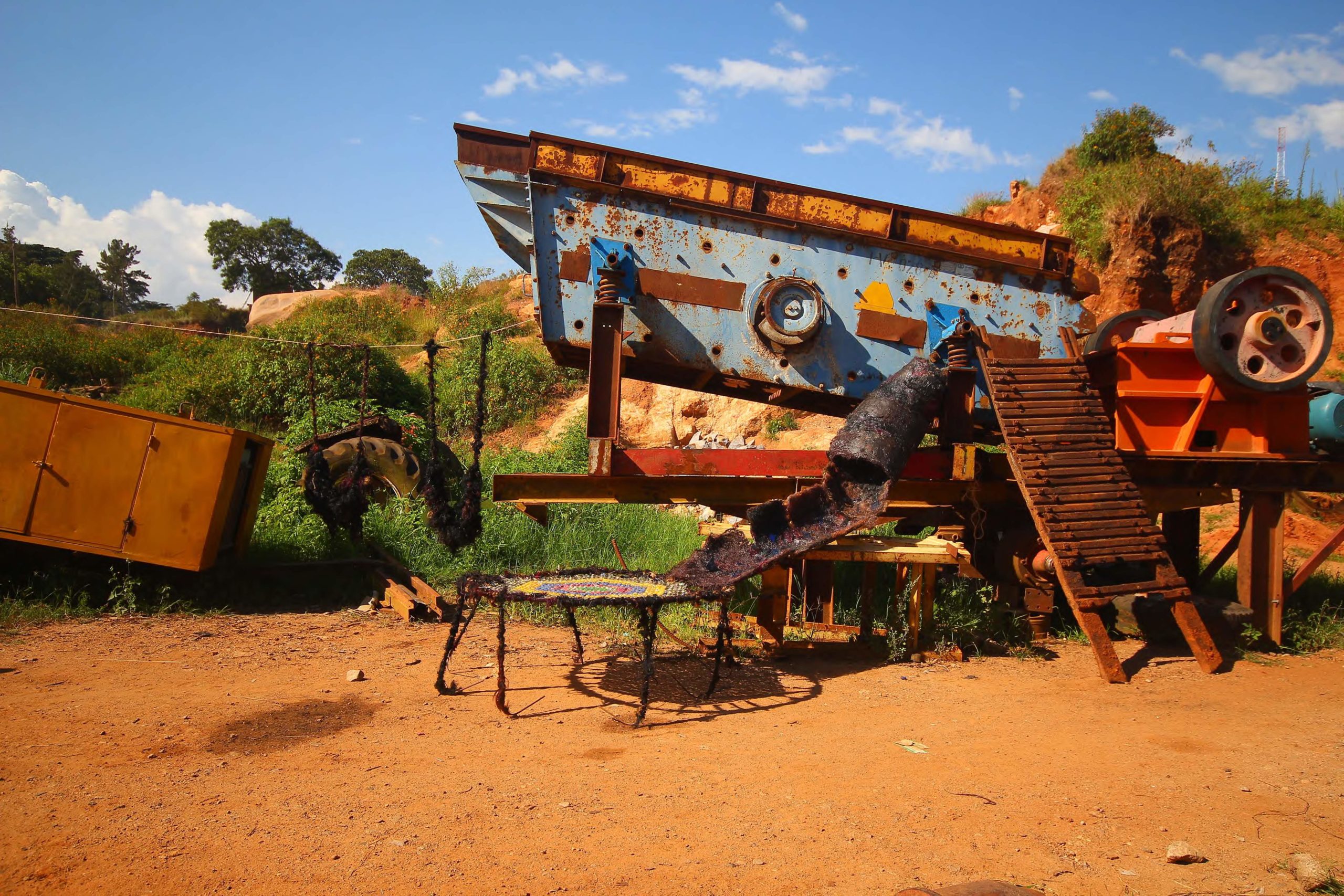 2013, 5×3,5×5 m, installation, shot at Buziga stone quarry in Kampala, courtesy of graduate Residency program 32° East, Ugandan Arts Trust, photo Moses Serubiri.
2013, 5×3,5×5 m, installation, shot at Buziga stone quarry in Kampala, courtesy of graduate Residency program 32° East, Ugandan Arts Trust, photo Moses Serubiri.
I have grown up in a house full of women from the time I was a child. Mum, sisters, cousins, aunties, girls’ boarding school for high school and so on. At any given time there were at least 4 women in the house. I don’t think this was the decisive factor for the use of hair in this sculpture but again I can’t rule out that exposure to this much hair could have influenced my choice in material. In 2013 I was at a point where I had started experimenting with alternative materials and so instead of fibreglass, I started using hair for the texture. Slowly as I collected hair from sisters, aunties, cousins, local saloons, the politics of hair started to unveil itself. Some of the hair purports to be human hair from India and Brazil, some is synthetic manufactured in Kampala and the rest is natural African hair.
Collecting the hair was not entirely easy as hair is very sacred in a number of Ugandan traditions. The fear of ones’ hair being used in ritualistic practices also came up and I had to always explain what it was for sometimes unsuccessfully. Collecting synthetic hair and foreign “human” hair from local saloons was easier as it had no known relations attached and was to be thrown out anyway.
I guess the use of Daddy in the title is in a way the longing for a connection to an absent father figure. And ?! is an expression of the paradox of seeking permission from this absent figure. When this work was created, the intension was to explore curiosity in children on a broad front. At least that’s what I set out to do. Then links to my own absence from playgrounds started to trickle in. After a medical accident at the age of 7, that rendered my left foot paralysed, playtime was restricted by pain and care giving adults and replaced by therapy sessions. That’s possibly the one event I can point to as a birth for this work.
Safe here
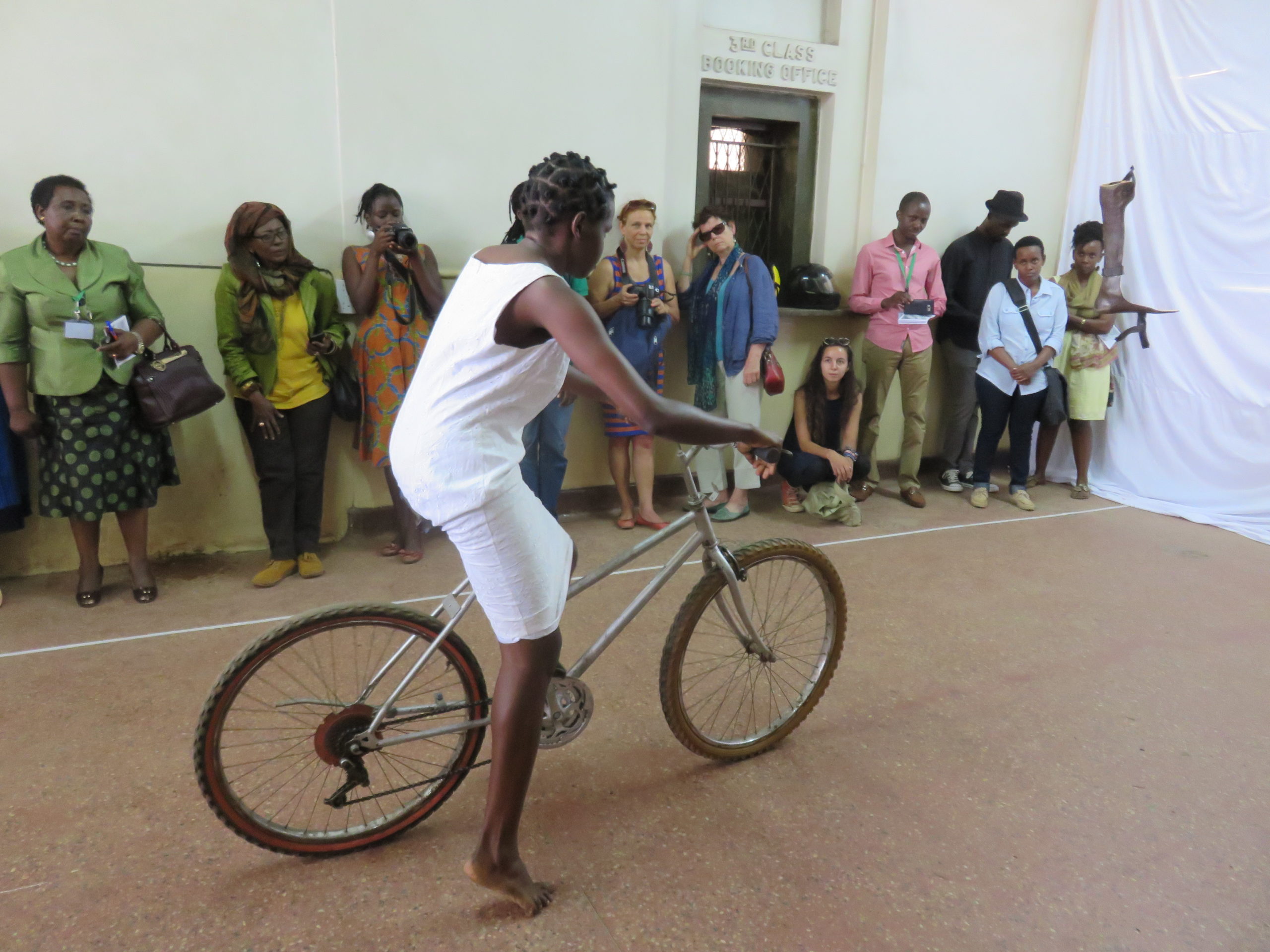 2016, performance, duration 30 minutes, courtesy of the Kampala art Biennial 2016, Rift Valley Railway, Kampala, Uganda, performance still by Rosalie van Deursen. Video : https://vimeo.com/188174742
2016, performance, duration 30 minutes, courtesy of the Kampala art Biennial 2016, Rift Valley Railway, Kampala, Uganda, performance still by Rosalie van Deursen. Video : https://vimeo.com/188174742
3
Another material : words
Dear Marcue love Immy
 Book, 5 parts all together, 23,5x29x4,4 cm, accordion is 4,7 m long when unfolded, photo Immy Mali.
Book, 5 parts all together, 23,5x29x4,4 cm, accordion is 4,7 m long when unfolded, photo Immy Mali.
P. H-SC.: Letters to my Childhood is a multifaceted artwork with a strong reference to language in the title and in the Letters to Marcue. Why this name of Marcue? Are there a lot of letters?
Immy Mali: Marcue is a nickname I was called as a child. It’s still used by mostly close family members. Marcue is a character who represents my childhood. By the time I published Dear Marcue love Immy, I had written 66 letters. The writing is still ongoing as topics expand so I am uncertain when it will stop. It might be important to mention that I write to Marcue at random moments, on whichever paper I can easily access in the moment so there’s no specificity towards paper choice.
Letter 27b
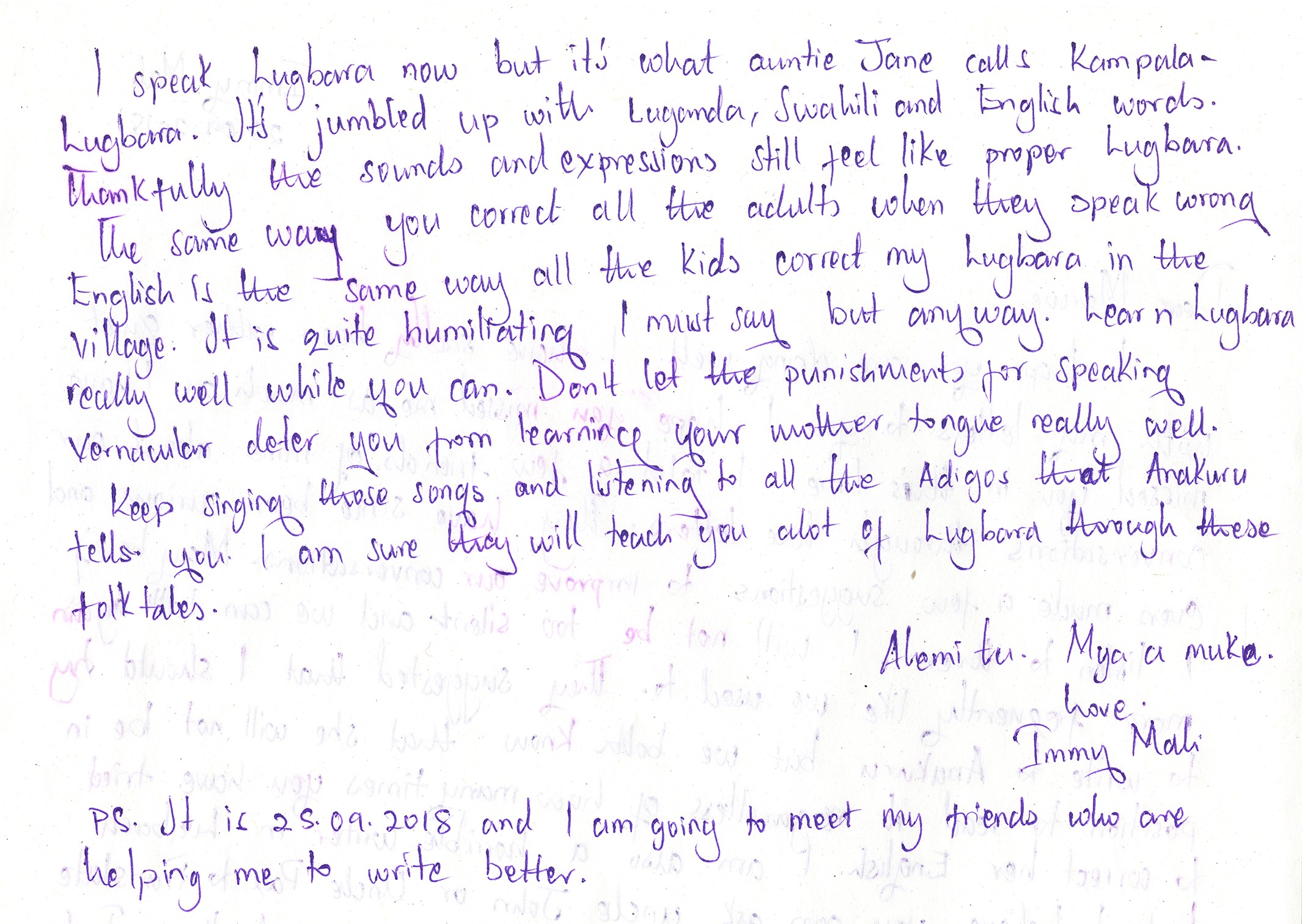 Transcription at the end. (1) Photo Immy Mali. “Displayed on a reading desk, the audience is invited to sit and read these letters.”
Transcription at the end. (1) Photo Immy Mali. “Displayed on a reading desk, the audience is invited to sit and read these letters.”
P. H-SC.: Do-you see yourself as a writer ?
Immy Mali: I see myself as an artist and whichever medium I find in my hands is what I use. I sometimes find that I express myself better in text and so I indulge in the medium.
P. H-SC.: You write letters to Marcue who represents your childhood, Immy, but does Marcue answer to you ? (Answer of the artist after notes 2 and 3)
(2) Marcue s’ Dollhouse, 2018 Rusted steel sculpture, banana fibre and cloth dolls, fabric 670x2800x1800mm. ( Immy Mali website: https://immymali.com/letters-to-my-childhood/ )
(3) Sounds of Memory, 2018, 30minutes, “this sound scape consists of nursery rhymes, songs, chants, and folktales in Lugbara, Luganda and English (the 3 languages that I grew up speaking).” ( Immy Mali website: https://immymali.com/letters-to-my-childhood/ )
Immy Mali: Marcue’s Dollhouse, Sounds of Memory (4) amidst other works are what I look at as responses to the letters. When I started writing these letters, I was curious about the peculiar, precarious nature of the installations I was making with reference to childhood. Installations such as Daddy Can I Play?! On embarking on the letter writing, it started to become clearer that there was a healing that needed to happen, a cleansing of sorts and so much as it might seem strange, I look at these artworks as responses to some questions and situations I pose to Marcue in the Letters.
***
(1) Letter to Marcue
I speak Lugbara now but it’s what auntie Jane calls Kampala-Lugbara. It’s jumbled with Luganda, Swahili and English words. Thankfully the sounds and expressions still feel like proper Lugbara.
The same way you correct all the adults when they speak wrong English is the same way all the kids correct my Lugbara in the village. It’s quite humiliating I must say but anyway, learn Lugbara really well while you can. Don’t let the punishments for speaking vernacular deter you from learning your mother tongue really well.
Keep singing those songs and listening to all the Adigos that Anakuru tells you. I am sure they will teach you a lot of Lugbara through these folktales…
Ale mi tu. Mya a muke.
Love.
Immy Mali
PS: It is 25-09-2018 and I am going to meet my friends who are helping me to write better.
“The letters take on a very personal and private space but at the same time explore the socio-political and economic environment of the Uganda the artist grew up in and continues to live in. Some of the topics tackled in the letters are daily family encounters, religion, identity; postcolonial effects especially through the education systems and effects of inter city migrations in a country that has over 54 different tribes.” (Immy Mali website: https://immymali.com/letters-to-my-childhood/ )
(4) “Sounds of Memory, which is a part of the project Letters to my Childhood. Or could be a manifestation of the same takes on the form of an installation which is set in the form of “Marcue’s Home”. The installation consists of video, sound, sculpture and found objects. A space set as a warm home environment consists of.”
List of the art works : Marcue’s Dollhouse (sculpture), Marcue’s Photo Album (video), Sounds of Memory (sound), Marcue’s Family Wall (series of photos). ( Immy Mali website: https://immymali.com/letters-to-my-childhood/ )
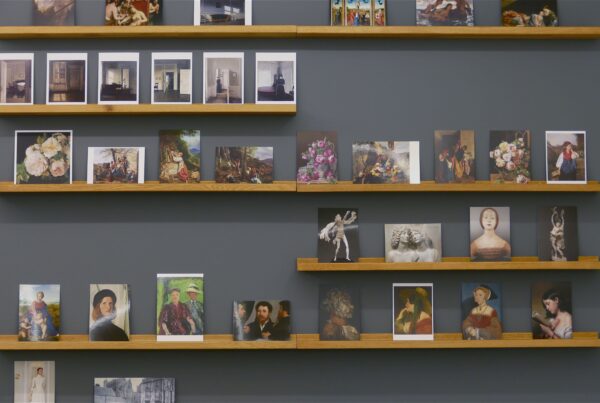
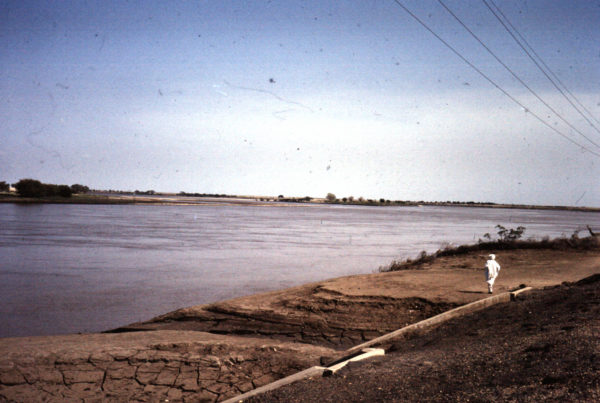
Intéressant, je regrette juste que les photos ne montrent pas de plus près l’utilisation des matériaux en particulier des cheveux qui semblent cruciaux.